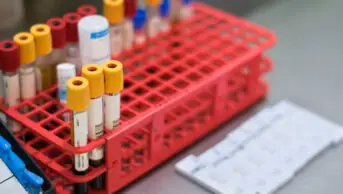“It is with real pleasure that I write for The Pharmaceutical Journal following my appointment as chief scientist at the Royal Pharmaceutical Society (RPS).
My aim is to highlight some of the research being published within RPS’s suite of four learned journals, which are available online to all RPS members.
Journal publications are a fundamental part of research; without them, research is not formally structured, shared, or able to be scrutinised, so the field cannot advance. Research is unquestionably the basis of science and — because pharmacy is informed by a breadth of research exploring medicines, from molecules to market to humans — all these journals are relevant to the science of pharmacy.
Different disciplines are underpinned by their own methodologies and philosophies, meaning the nature of knowledge and how it is produced and critiqued will differ depending on what is being studied. With this in mind, it was with interest and some poignancy that I came across a study published on 27 September 2022 in the Journal of Pharmaceutical Health Services Research.
‘Risk assessment of the continuity of essential medications for low socioeconomic patients in Syria: a case study of diabetes mellitus’ is a small, local study that might have otherwise escaped my attention had it not been for my heightened awareness of the problem of drug shortages in the UK, and discussion of potential causes in the pharmacy press. This Syrian paper is both a stark reminder of how socioeconomic factors can create health inequalities worldwide, and of how a political landscape can weaken the supply chain to impact on medicines availability way beyond our own borders.

The authors set out to check the availability of oral antidiabetic medicines at two-week intervals in ten community pharmacies in Damascus during a three-month period in 2020/2021, during the COVID-19 pandemic. They also aimed to provide data on the demographics and prescription details of patients of low socio-economic status on oral antidiabetic agents receiving prescriptions through a local non-governmental organisation operating in Damascus.
The rationale for this approach, the authors argue, is that socio-economic status not only increases the risk of developing diabetes, but also determines its course since lack of resources limits a patient’s ability to source their medicines beyond the local arrangements. Indeed, the authors go on to report that the commonly prescribed oral antidiabetic agents — metformin, gliclazide and sitagliptin — were not available in many of the pharmacies sampled, over a prolonged period of time. For example, metformin was generally available, on average, in less than 40% of the pharmacies at each sample point, with gliclazide and sitagliptin availability just slightly higher on average when sampled, although never rising above 55%.
Reporting shortages as the overall percentage of pharmacies that have the medication in their stocks at each timepoint, what the paper does not show is the itemised data detailing whether and how availability changed at the level of individual pharmacies across time. Nor does the paper explain how quickly the Damascus pharmacies could restock their supplies. Indeed, without exact information on the geographical spread of the pharmacies, it is also difficult to judge if shortages in one pharmacy could have been met by availability in a nearby pharmacy.
Nonetheless, the authors explain the political context which gives rise to medicine shortages in Syria; armed conflict, the closure of factories, the price of raw materials, transportation difficulties as well as economic sanctions and governmental decisions are all cited as potential causes. Patients in turn, are presumed to cope by skipping tablets, changing their diet or simply accepting the unavailability of their medicines.
If it does nothing else, perhaps this paper might help us gain some perspective on medicines shortages experienced in the UK and sometimes attributed to Brexit. For me, it raises the complex question of whether it is truly fair to continue to dispose of patient-returned medicines in the global west, mainly because we cannot attest to their continued integrity when the basic availability of essential medicines is under threat in countries, such as Syria.
A neat review article entitled ‘Formulation, design and strategies for efficient nanotechnology-based nasal delivery systems‘, published on 12 September 2022 in the inaugural issue of RPS Pharmacy and Pharmacology Reports, also grabbed my attention.
The article appealed to me for its all-encompassing approach to explain the nasal route for drug delivery, drug (molecular weight, lipophilicity, ionization), biopharmaceutics (permeation, muco-ciliary clearance, efflux transporters and enzymes, deposition area) and formulation (pharmaceutical form, pH, osmolarity, viscosity, excipients) considerations for nasal delivery, and different nasal delivery devices (drops by pipette, squeeze bottles, metered-dose spray pumps, single and double-dose spray devices, pressurised metered-dose inhalers, electric nebulizers and atomizers, devices for solid forms, breath-powered technology), before detailing various nanoparticulated systems for delivering drugs to the brain via the nasal route, to protect the constituent drug from biological and chemical degradation and help it traverse the blood-brain barrier.
These nano-size systems include nano-emulsions, solid lipid nanoparticles, nanostructured lipid carriers, polymeric nanoparticles, liposomes and inorganic nanoparticles. Clozapine, for example, has been studied within nano-emulsion systems as a potential future solution to patient non-adherence; solid lipid nanoparticles have been developed for a non-viral DNA vaccine delivery system. There are risks too. For example, the authors cite a study of amorphous silica nanoparticles administered intranasally in mice, which resulted in abnormal activation of the coagulation system.
I leave readers to access and enjoy this review for themselves. To me, the paper is reminiscent of a book chapter, and I have it in mind to ask my academic colleagues how they view this paper’s potential as material for undergraduate teaching of pharmaceutics.”
Parastou Donyai is chief scientist at the Royal Pharmaceutical Society.


